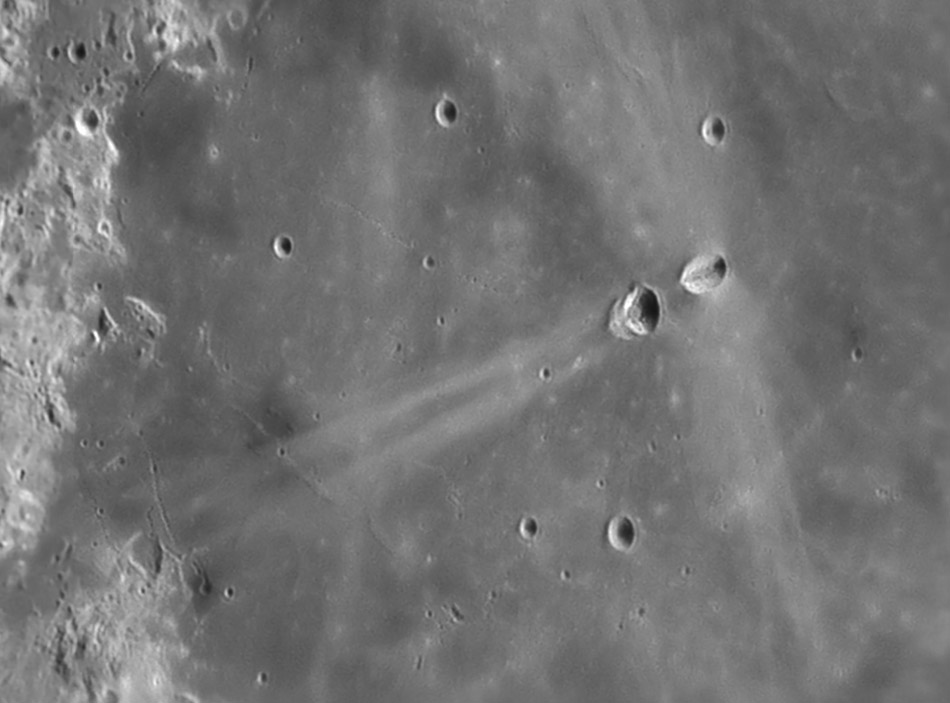August 25, 2018
Butterfly Wings & Railway Tracks
Originally published June 12, 2009

image by Sean Walker, New Hampshire
The Messier craters often have been discussed in terms of their peculiar shapes, but Sean's great image emphasizes the equally peculiar rays. Messier, the eastmost elongated crater with a narrow ridge down its middle, has rays that radiate out to the north and south sides. These are among the most unusual rays from any oblique impact crater. For normal oblique impacts the rays splay out in a complete forward arc, with a V-shaped zone of avoidance in the direction the projectile came from. The railway track-like rays from Messier A (on the left) are exactly what would be expected for a very low angle impact - collimated straight ahead in the downrange direction. So the rays from A are consistent with the interpretation that the projectile came from the east at an angle of only a few degrees above horizontal. And Messier's butterfly wing rays indicate that, for some reason, pulverized ejecta was thrown out sideways even while the main mass of ejecta continued downrange. As an aside, we can hope to see downrange rays when we get hyper-resolution images of the Kaguya impact site because the spacecraft skimmed into the surface at only a 10° angle.
Chuck Wood
Technical Details
5/31/2009, 0:13 UT. C-14 at f/22, DMK-21AU04.AS camera, Baader IR-Pass filter. Stack of 476 frames out of 3000, processed in AviStack, MaxIm DL, and Adobe Photoshop
Related Links
Rükl plate 48
Yesterday's LPOD: Peaking Over the Limb
Tomorrow's LPOD: Half a Golden Quarter
COMMENTS?
Register, Log in, and join in the comments.



